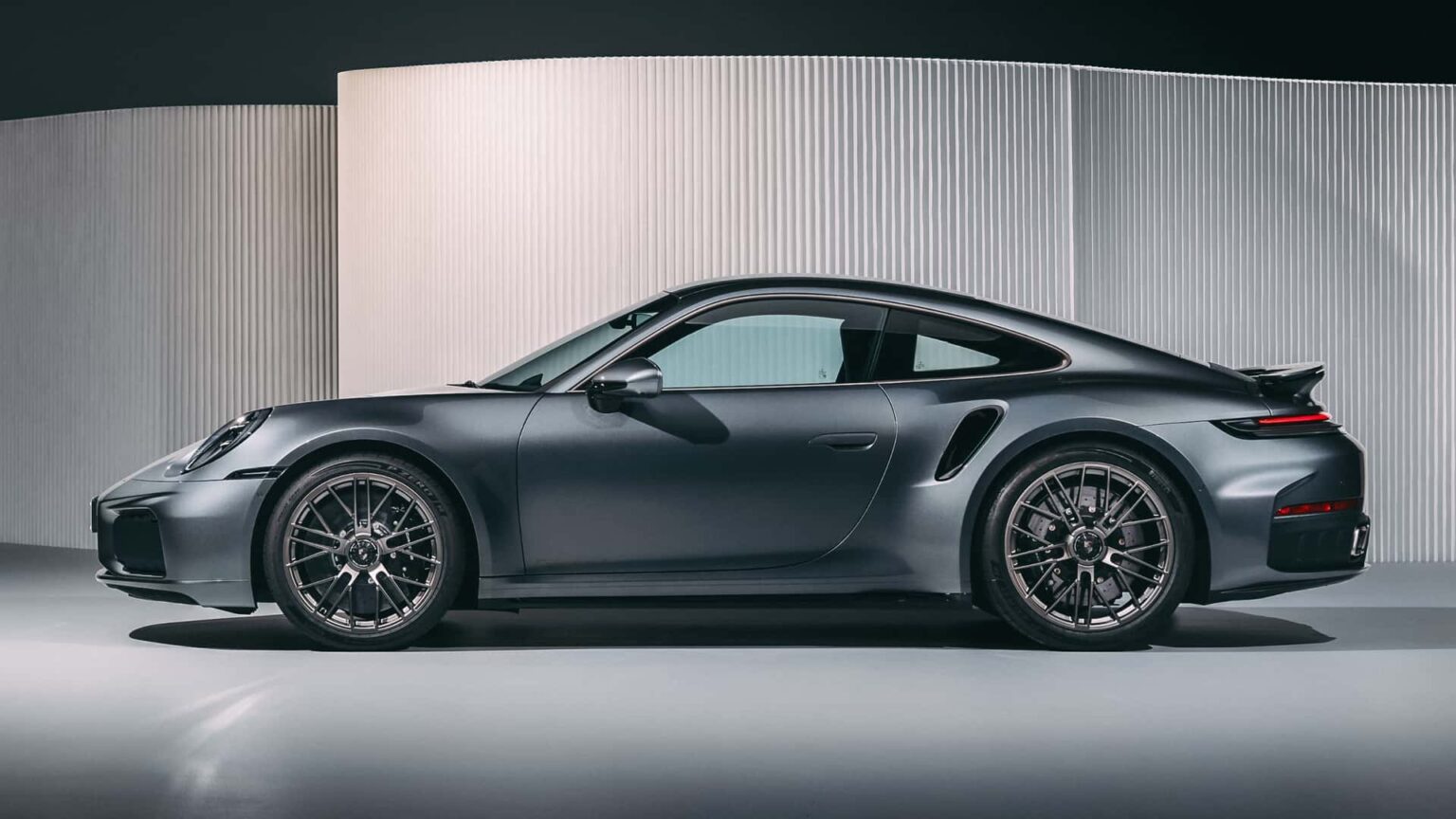Last year, the Porsche 911 Carrera GTS went hybrid in pursuit of more power without increasing emissions. Now, the almighty Turbo is doing the same—and the effects are profound.
With 701 horsepower, a 0-60 mph time of 2.4 seconds, and a Nürburgring Nordschleife lap time 14 seconds faster than its predecessor, the 2026 Porsche 911 Turbo S—which debuts today at the Munich Motor Show—is an absolute monster.
Performance: Twin-Turbo Hybrid Power
The new, 992.2 Turbo S uses the same basic “T-Hybrid” system as the Carrera GTS. There’s a 1.9-kilowatt-hour, 400-volt lithium-ion battery in the trunk—the same spot as the 12-volt battery in non-hybrid 911s—and an electric motor sandwiched between the engine and eight-speed dual-clutch PDK transmission. Except where the GTS uses a new 3.6-liter flat-six with a single electric turbocharger, the new Turbo S gets twin electric turbochargers.
Those electric turbochargers have a motor on the shaft linking the turbine and compressor, and these can spool up the turbo almost instantly. The motors also eliminate the need for a wastegate, instead braking the turbo, and harvesting that otherwise-wasted energy to either go back into the battery or be directed to the traction motor. It’s the same motor Porsche uses for the GTS turbocharger, but the turbine and compressor wheels on the Turbo S are slightly smaller here.
Photo by: Porsche
Photo by: Porsche
Photo by: Porsche
Total system output is 701 hp, which plateaus from 6,750 and 7,000 rpm and 590 pound-feet of torque between 2,300 and 6,000 rpm. That’s 61 more hp than the previous Turbo S, while torque remains the same. This makes the new Turbo S the most powerful road-going 911 yet, more powerful even than the old GT2 RS, which made 691 hp.
As ever with the Turbo S, all-wheel drive is standard. This new model also gets the latest version of Porsche Dynamic Chassis Control (PDCC), adjustable anti-roll bars, which operate off the 400-volt system for quicker response.
As standard, you also get carbon-ceramic brakes with 16.5-inch discs up front and larger 16.1-inch discs out back, plus a new pad material. A new sports exhaust with a titanium muffler and exhaust tips is also standard.
Photo by: Porsche
The new Turbo S gets slightly wider rear tires, 325/30R21s instead of 315/30R21s. Like the Carrera GTS, the increase in width is likely to deal with the extra power and increased rear weight bias of the hybrid system. The fronts remain at 255/30R20, and the Turbo S gets wider fenders in the great 911 Turbo tradition.
This new car gets some aero tweaks too. Active grille shutters up front can open up when cooling needs dictate, but shut to improve drag. There’s also an active front diffuser to work in concert with the deployable splitter and rear wing. Porsche says the improvements amount to a 10-percent reduction of the drag coefficient with the aero in its most efficient setting.
51
Source: Porsche
Visually, the new Turbo S is distinguished by exterior and interior accents in Turbonite, a new brown/gray shade Porsche created for Turbo models. There’s also a new center-lock wheel design.
While the Turbo S comes very well equipped as standard, being a Porsche, it’s still incredibly customizable. A new option is carbon-fiber wiper arms. No, really.
Price: Big Numbers
Photo by: Porsche
All of this new stuff has a consequence, though—weight and power. Porsche says the Turbo S coupe weighs 3,829 pounds, 180 more than its predecessor. Though it’s quick to point out that its 7:03.92 is a huge improvement over the old Turbo S’s time, and that the weight gain is relatively low for a car going hybrid.
Then there’s price. The Turbo S coupe starts at $272,650, while the Cabriolet is $286,650. That’s an over $30,000 increase over the outgoing Turbo S models, and Porsche says that tariffs could push the price even higher. Tariffs have already hit Porsche—which doesn’t build cars in the US—hard, and the brand had already been increasing prices significantly over the last few years.
That’s just the price you’ll have to pay for the most powerful, highest-tech 911 yet.
51
Read the full article here


